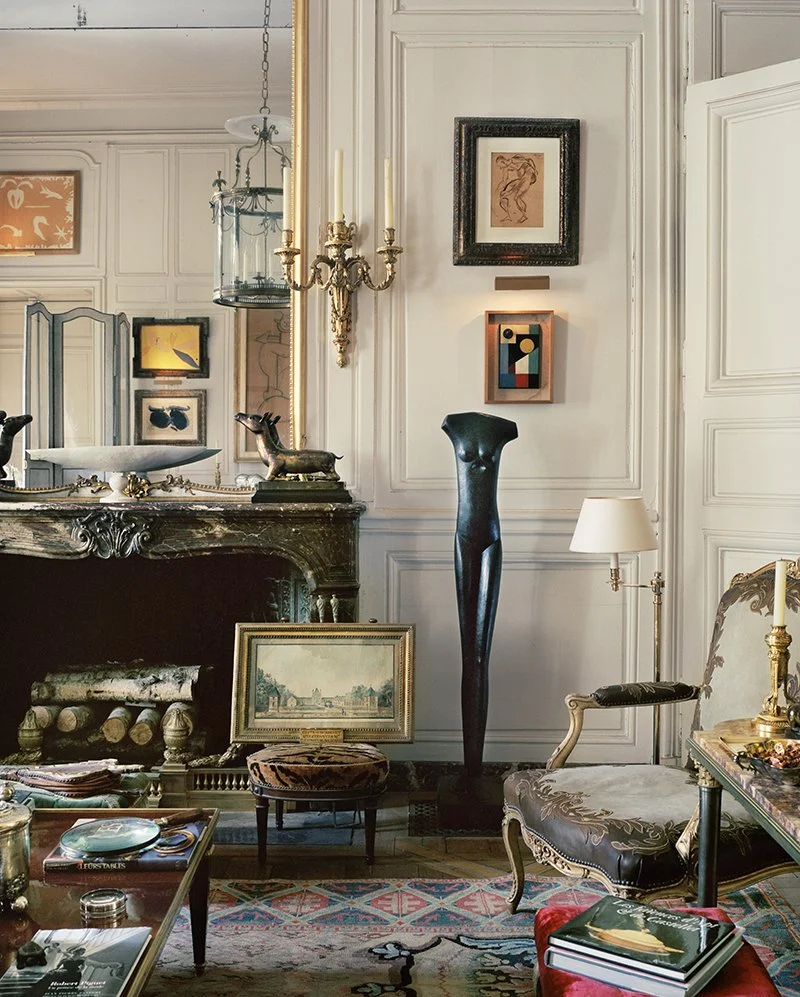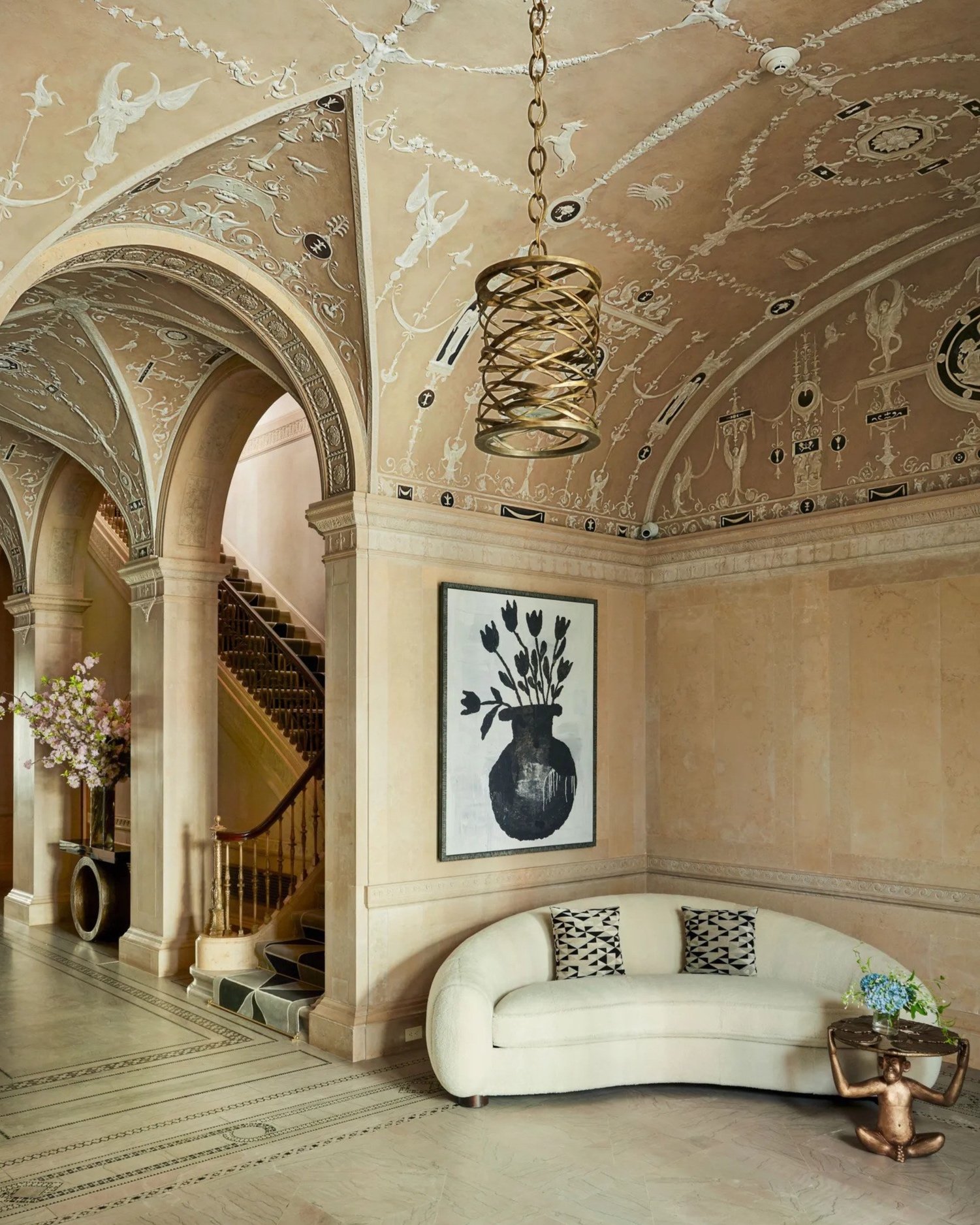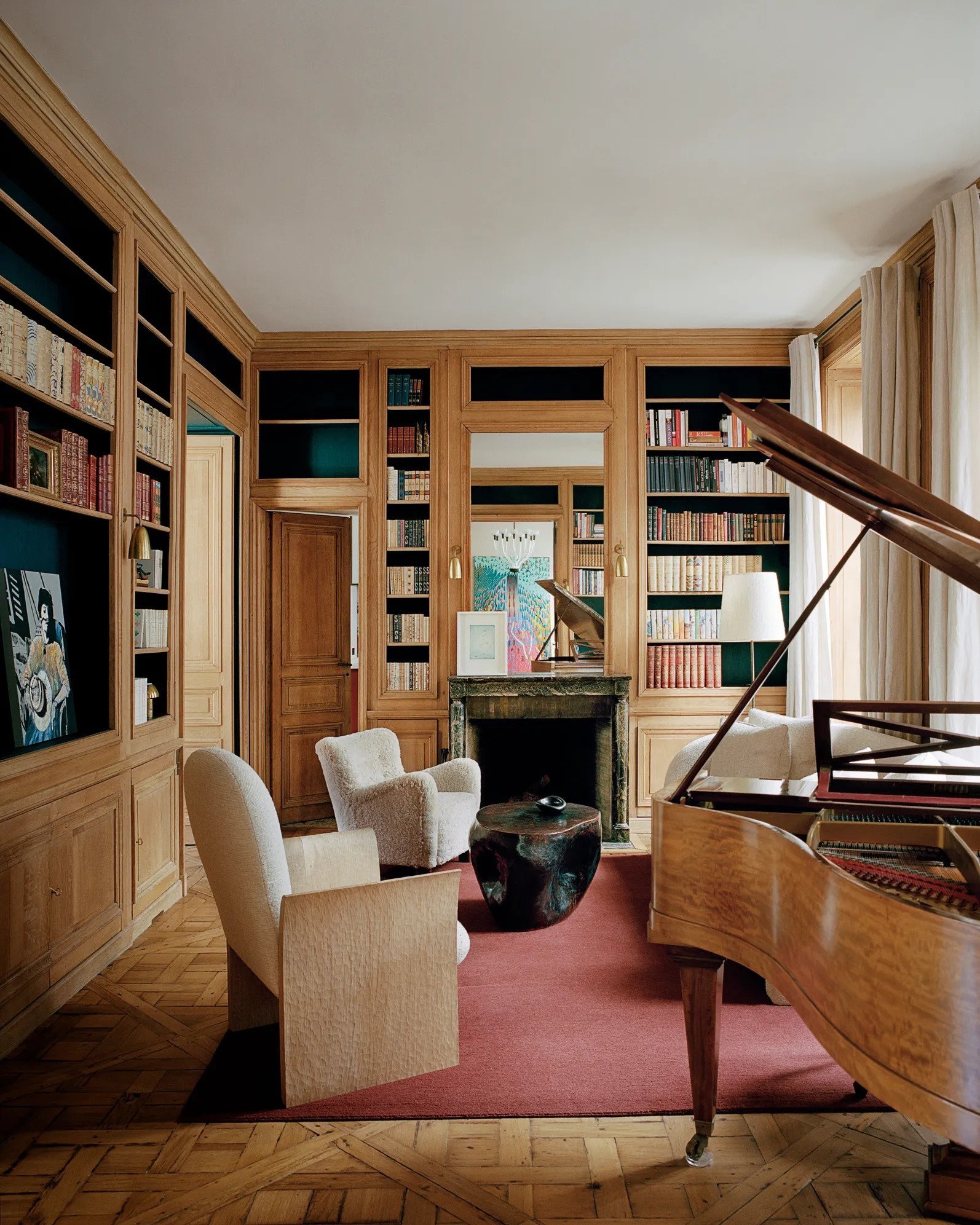Living Well
The Art of the EVERYDAY
“Travel is useful, it exercises the imagination. All the rest is disappointment and fatigue. Our journey is entirely imaginary. That is its strength. It goes from life to death. People, animals, cities, things, are all imagined. It’s a novel, just a fictitious narrative … You just have to close your eyes. It’s on the other side of life.” — Louis-Ferdinand Céline, Journey to the End of the Night
As children, we all have hopes, dreams, ambitions and desires. They might be in the moment, for example, a superficial longing for X, Y or Z toy on our birthday, or looking ahead, to life as an adult, with aspirations of becoming a firefighter, detective or archaeologist (for those of us of the Jurassic Park generation), all of which seem filled with excitement and the opportunity for endless adventure. Then, entering the teenage years — not yet an adult and still too young to embark on our first forays into the job market, for very many of us a weekly allowance, or pocket money, is the route to independence; to building experiences, making mistakes and taking those first tentative steps into a world unencumbered by the familial baggage of parents and siblings. This is when we start to be drawn in by advertisers’ tricks, and the prevalence of rampant materialism, unnecessary luxury and self-indulgent hedonism which, in a world of social media, such as Instagram, YouTube and TickTock (where celebrities and influencers are paid to pedal merchandise — anything from Gucci, Schiaparelli and Christian Dior to the sort of “cheap and cheerful” sweatshop fashion destined for landfills and incinerators) has become turbo-charged, leading to warped ideas of “normality”, and, for those without recourse to unlimited finances, disappointment at how unreachable and unattainable such lifestyles may seem. Not only that, but factoring in the prevalence of reality television shows, e.g. Keeping up with the Kardashians, Selling Sunset and the Real Housewives franchise, to name but a few, the pampered and charmed lives of the super-rich are on view for us all of to see, with the result that for younger generations such extreme wealth seems almost normal; leading, inevitably, to disappointment and disillusionment when the cold hard truth of reality bites. Indeed outside the realms of celebrity-driven make-believe, living standards are falling at the fastest rate since the mid-nineteen fifties, as earnings struggle to keep pace with rampant inflation, meaning that for those younger generations embarking on a new career the world seems an ever more daunting place. Of course, we all have differing ideas of what constitutes “living well” — for some people, it’s being surrounded by family and friends, with little thought or desire for the trappings of wealth, other than recourse to sufficient funds so as to pay the bills each month; whereas for others, especially those with an affinity for art, design, architecture, and to borrow a somewhat hackneyed phrase, “the finer things in life”, the need to make money seems something of a necessity. Quite understandably, to a good many people, the latter might seem entirely shallow and superficial, but life’s short, and provided it’s not hurting anybody (the cautionary tale of American art dealer Inigo Philbrick (b. 1987) comes to mind), who are we to judge how others spend their hard-earned cash: “Some people in the art world bemoan the hedge fund millionaires spending freely to acquire ostentatious displays of wealth and coolth for their giddily chic designer duplexes,” opines gallerist Charles Saatchi (b. 1943). “Others bemoan art being treated as a commodity. But most of the bemoaning is because the art world is stuffed full of bemoaners, bemoaning about everything.”
The Hôtel d’Orrouer, on Paris's Rue de Grenelle, the home of famed French Couturier Hubert de Givenchy, photograph by Francois Halard c/o Christie’s
The 1913 Manhattan town house of American entrepreneur Robert Warren Miller, with interiors by French decorator François Catroux, photograph by Ngoc Minh Ngo
In Europe, and the UK especially, amongst the chattering classes, the idea of openly talking about money is considered somewhat vulgar; but, as evidenced by numerous celebrated society hosts from Nancy Lancaster (1887-1994) to Alexis, Baron de Redé (1922-2004) and Marie-Laure de Noailles (1902-1970), spending it is clearly not. As a caveat, all those aforementioned are exceptions to being labelled as either frivolous or excessive as they were “serious” collectors and built homes that have become celebrated for their originality and discernment. The same can be said of Helena Rubinstein (1870-1965), Hélène Rochas (1921-2011), Roger Vivier (1907-1998) and Yves Saint Laurent (1936-2008) — who made their fortunes catering to the haute bourgeoisie and went on to translate their very particular vision of aesthetic beauty into interiors that still entrance and influence today (as evidenced by the astronomical prices their collections later realised at auction). Of course, criticism of those designers and decorators who devote their every waking hour to creating exquisitely curated spaces in which for their clients to conduct the necessities of day-to-day living doesn’t come only from out-with the profession. Indeed a good many contemporary architects will often talk dismissively of the “luxury interiors sector” — that is, anyone working for private clients on high-budget residential projects — and what they view to be “gaudy pleasure palaces” in prime areas, namely, Chelsea, Mayfair, Belgravia, Knightsbridge, which, apparently, are wantonly lacking in such academic and theoretical underpinnings (not to mention plywood, concrete and grey paint) so as to enter into the pantheon of the sort of “serious architecture” warranting elevated critical discourse. Seemingly many of those architects whose design ethos is underpinned by an idealistic, utopian vision would rather while away their lives designing extensions for modest family dwellings in the leafier areas of zone three, than betray their ethics and reduce themselves to working for the metropolitan elites, or worse still, corporate entities, i.e. banks, law firms and blue-chip galleries (though more often than not this is inextricably linked to their having been passed over for flagship projects in favour of their PR-friendly, competition-winning competitors). Of course, there is a wider societal problem in that interior design as a profession is often not taken as seriously as architecture, with the idea that it entails nothing more than choosing cushions and fabrics, flipping through colour charts and deciding on such trivialities as what curtain poles go where. The reality is that at the majority of top firms, interior designers are responsible for the entirety of a project, including everything from the shell up; not only furniture, fixtures and finishes but the complete master plan, as well as lighting design, landscaping and project management. These misconceptions and prejudices are extremely unhelpful, something that, on an educational level, needs to be urgently addressed, as many of those who are now successful players in the industry had no idea such a professional route was open to them, not only at school but during higher-academic studies.
The library in an apartment once occupied by storied French decorator Jean-Michel Frank as masterfully reimagined by Pierre Yovanovitch, photograph by François Halard, c/o Yovanovitch
Successful interior designers, architects and decorators — whichever appellation they so choose to employ — regardless of their inherent aesthetic predilection, share one key characteristic, namely, to sell clients on a lifestyle; the idea that by employing them they will magically transform one’s everyday abode into the sort of polished, well-considered and effortlessly chic interiors seen not only in glossy editorials but on television and the silver screen. Whilst some, e.g. Studio Mellone, Axel Vervoordt (b. 1947), Billy Cotton (b. 1982) and Pierre Yovanovitch (b. 1965) are able to achieve this, others fall far short, producing designs that lack refinement, and place far too heavy a reliance on cheap theatricality and tick-box trend driven props (I think we could all do without seeing another reproduction Serge Mouille wall light or Pepto-Bismol pink “Ultrafragola” mirror). For each and every one of us, inevitably, there are certain films where we’ve coveted the lifestyles of those characters whose day-to-day experiences are played out before us. Whether that be the sun-drenched Sicilian Trullo in A Bigger Splash (2015), the austere, modernist Villa Necchi Campiglio in I am Love (2009) or Jep Gambardella’s extraordinary eyrie overlooking Rome’s Colosseum in Paolo Sorrentino’s (b. 1970) breathtaking La Grande Bellezza (2013) (The Great Beauty) — a tragicomedy of Italy’s leisured classes in the tradition of Antonioni’s (1912-2007) La Notte (1961) or Fellini’s (1920-1993) La Dolce Vita (1960). Gambardella, the louche, ageing playboy protagonist, as portrayed with a veneer of wit and fathomless soul by Italian actor Toni Servillo (b. 1959), has, for decades, been the elegantly dressed fulcrum of the city’s fashionable nightlife: “When I came to Rome at the age of 26, I fell pretty swiftly into what might be defined as the whirl of the high life,” Gambardella professes, a world-weary aside to viewers. “But I didn’t just want to live the high life, I wanted to be the king of the high life. I didn’t just want to attend parties, I wanted the power to make them fail.”
At first brush, one might easily assume, with such grandiose pretensions, Gambardella is an entirely unlikeable figure; but somewhat paradoxically, he manages to attain something of an “everyman” status. Despite occupying a rarified, privileged world, unencumbered by such mundanities and practicalities as a family or nine-to-five job, his preoccupations are, essentially, universal. After learning of the death of his first, and possibly only, love, he enters into something of an existential crisis, poetically adrift and preoccupied with his own looming demise, and the idea that he’s squandered his talents; after writing a modern classic in his youth, Gambardella achieved a level of fame and fortune that he’s coasted on ever since, falling into an unfulfilling life as a gossip journalist. Yet, at the same time, he remains acutely aware of the beauty around him, not only in terms of Rome’s extraordinary physicality, but in lives unlike the one he’s chosen. Such nuanced sensibility is reflected in almost every aspect of his being; always immaculately attired, his grey hair swept back and curling at the neck (a perfect candidate for @cheveuxderiches_officiel), he is perhaps the most elegant, carefully considered aesthete in modern film (hotly followed by Dickie Greenleaf, as played by Jude Law (b. 1972) in The Talented Mr Ripley (1999)). The very picture of a flâneur, as immortalized by French poet Baudelaire (1821-1867) — and in whom, as German philosopher Walter Benjamin (1892-1940) wrote, “the joy of watching is triumphant” — his choices, both sartorially, and in terms of the interiors of his bachelor apartment, are intoxicating, leaving one with an instant desire to don a pair of off-white trousers and move permanently to the Eternal City.
The dining room in a 1854 white-clapboard Greek Revival house, Fall Clove, Delancey, New York, with interiors by American decorator Billy Cotton
Gambardella’s character perfectly encapsulates the “art of the everyday”, as it were, in the sense that each and every aspect of his life, from his socks to his watch, crockery, furniture, bed sheets and even his espresso maker (“La Conica” by Aldo Rossi, for those interested), have been carefully chosen for their inherent aesthetic appeal. When decorating it doesn’t hurt to abide by the somewhat trite aesthetic adage of Arts and Crafts master William Morris (1834-1896): “Have nothing in your house that you do not know to be useful, or believe to be beautiful.” However, whilst a washing machine or dishwasher might not necessarily be “beautiful”, per se, there are numerous, often overlooked details, such as cutlery, utensils and even bathroom accessories that can be both “useful” and “beautiful”, in the sense of their being elegant and well designed. Indeed this was essentially the intention of numerous avant-garde modernists, such as Charlotte Perriand (1903-1999), Jean Prouvé (1901-1984) and Pierre Jeanneret (1896-1967) who made it their life mission and manifesto to bring design, form and function to the masses and to establish a connection between art, interiors, architecture and the commercial market. Ultimately, none of them really succeeded, as then as now, quality costs and can rarely be achieved on a shoestring budget. Arguably IKEA, the world’s largest furniture retailer, has come close, selling inoffensive design-led furniture at a price palatable to everyone from students to young families starting a home. The problem is that the vast majority of such trend-based flat-pack furniture ends up in landfills, as it’s poorly made and very rarely stands the test of time. “It’s not about today that we need to be thinking; it’s about tomorrow,” Perriand told Artforum in 1999. “There is of course the need to make inexpensive products. New models have to be created for the masses. But I think there is also something beyond prêt-à-porter. Say we no longer use techniques like weaving because of the expense. So do we do without it definitively? Why? There’s no need. What is inexpensive because it is produced cheaply won’t last 100 years. But when I talk to you about tomorrow—it will have to cost nothing, be made with new materials and new techniques. It will, of necessity, be made of things as they are.”
For those truly enamoured by the idea of living well, personal proclivities — whether they be for the sort of objet-laden pattern-heavy interiors favoured by Tony Duquette, or white-walled Zaha Hadid-esque futuristic minimalism — are entirely irrelevant, as essentially, it’s an aesthetic approach, where nothing is left to chance, and where every last detail is considered, chosen for its inherent charm, and with the idea that it will be kept until it wears out or falls apart (something equally applicable to fashion as it is interiors). Needless to say, such an attitude, and approach to life has as much to do with confidence and assurance as it does with inherent good taste; the latter, in and of itself, a thorny topic, with some taking a hard line. In the no holds barred opinion of former Vogue and Harper’s fashion editor Diana Vreeland (1903-1989) for example, “one is born with good taste. It’s very hard to acquire,” and however hard one might try, one can only “acquire the patina of taste”. Of course, for those that don’t have it, or, for those that do, but simply can’t find the time, throughout history, the very best designers, as regards both fashion and interiors, such as Hubert de Givenchy (1927-2018), Billy Baldwin (1903-1983), Yves Saint Laurent (1936-2008) and François Catroux (1936-2020) (whose client, designer Diane von Furstenberg (b. 1946) once described as the master of “grand coziness”) can provide you with a patina sufficient to fool even the most raffinée, that is, provided you’re prepared to pay for it.



